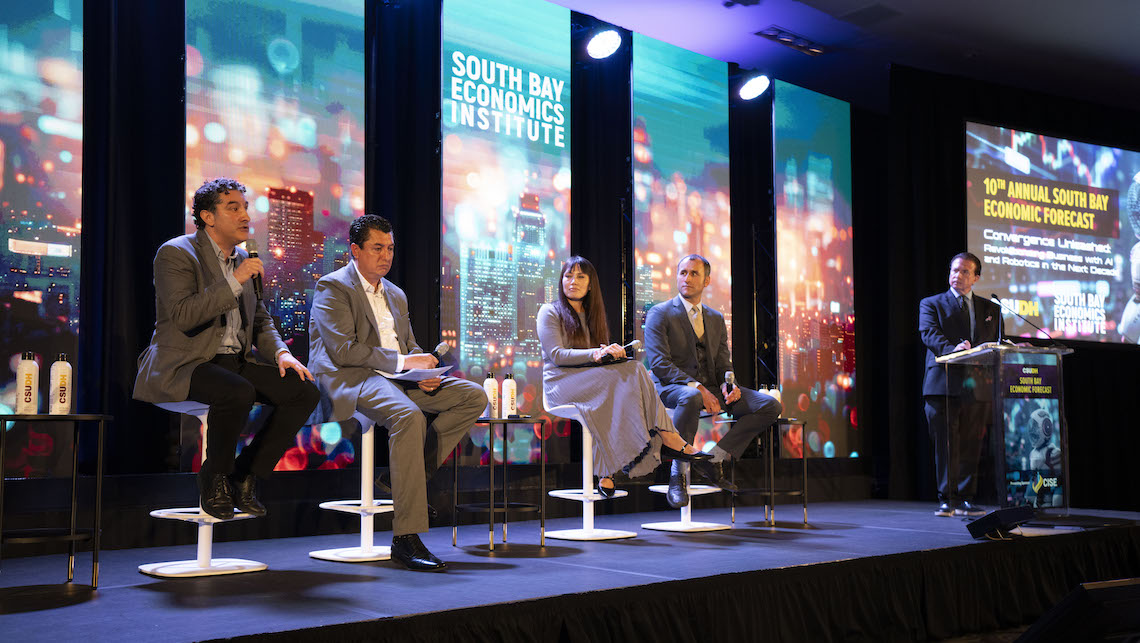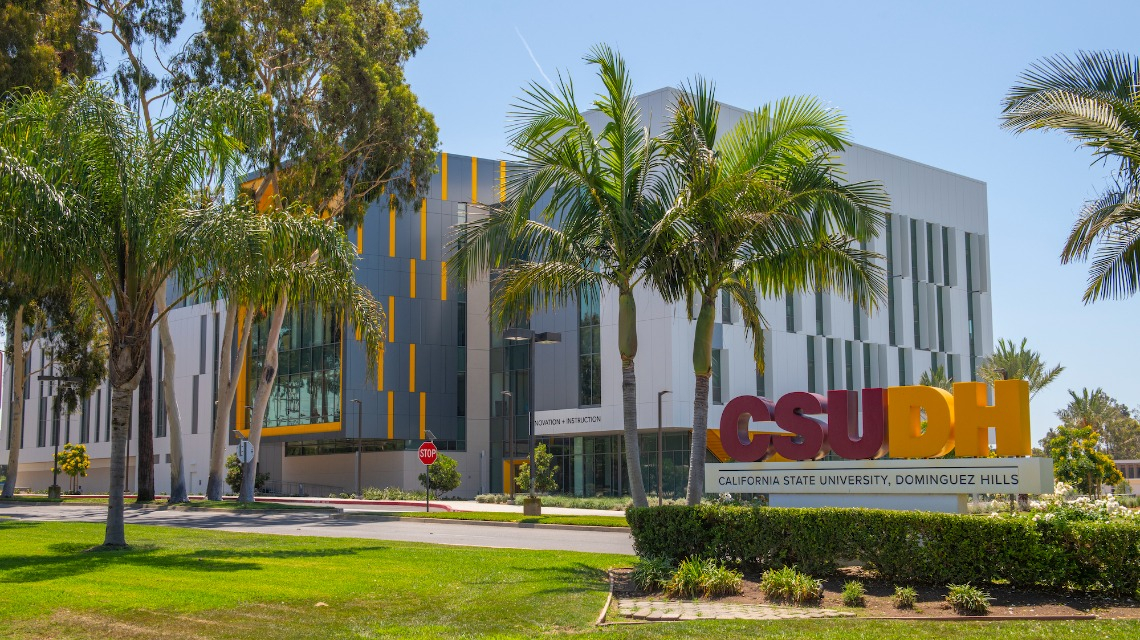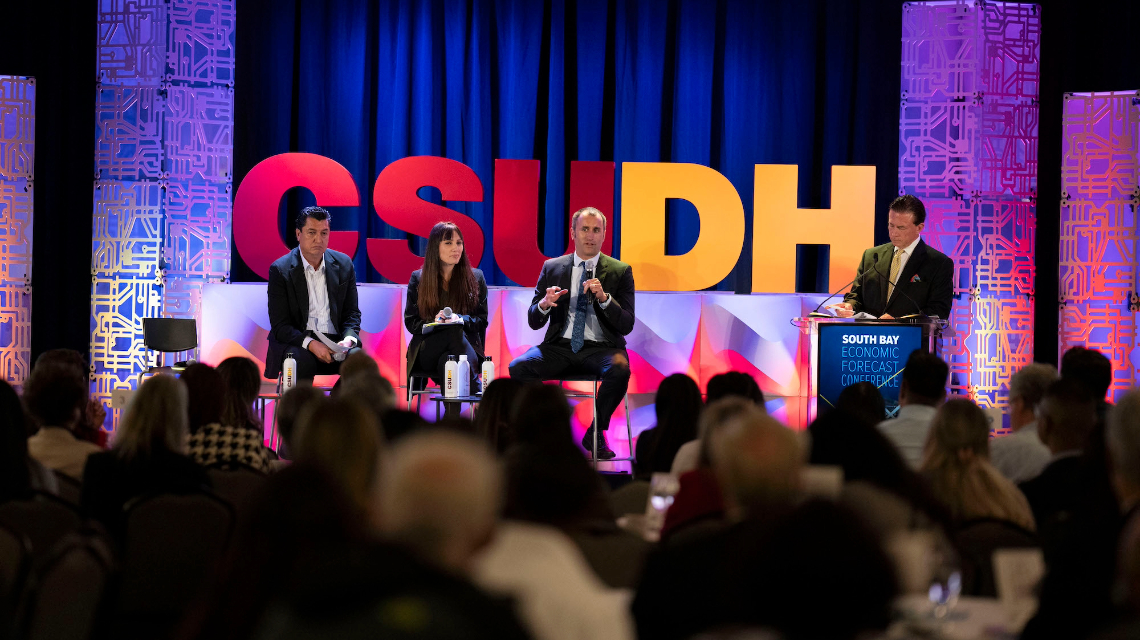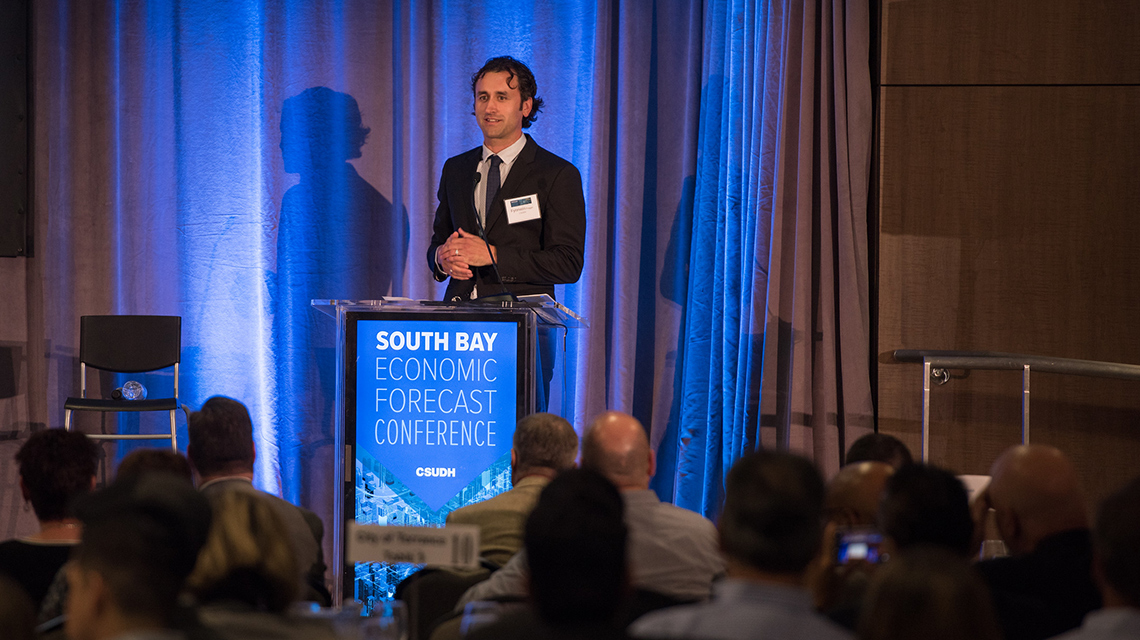
Fynnwin Prager is an expert on the economic repercussions of epidemics and pandemics. In the article, Prager draws parallels between the study he co-published in 2016, “Total Economic Consequences of an Influenza Outbreak” and recent economic predictions about COVID-19. He also touches on economic and business resilience, the need for better support for communities of lower socio-economic status during health crisis, and a new research partnership with colleagues at USC CREATE and ImageCAT that uses satellite-imaging data to explore various economic factors related to COVID-19.
In 2016, Fynnwin Prager, associate professor of Public Administration at CSUDH, co-published the study the “Total Economic Consequences of an Influenza Outbreak.” The study and his more recent research have provided Prager a knowledge base well suited for examining the impact of COVID-19 on the local and national economy.
Prager is co-director of CSUDH’s South Bay Economics Institute (SBEI), where he works with colleagues Assistant Professor of Finance Jennifer Brodmann and Professor of Economics Jose Martinez to provide innovative and forward-thinking economics education and research for the region.
2020 Vision: South Bay Economic Forecast
In October 2020, the nation was seven months into the pandemic, with fears of a post-holiday spike on the horizon. That month, the SBEI released its annual South Bay Economic Forecast report, which optimistically projected that Gross Domestic Product (GDP) would reach pre-pandemic levels by mid-2021, and employment would follow suit a year later.
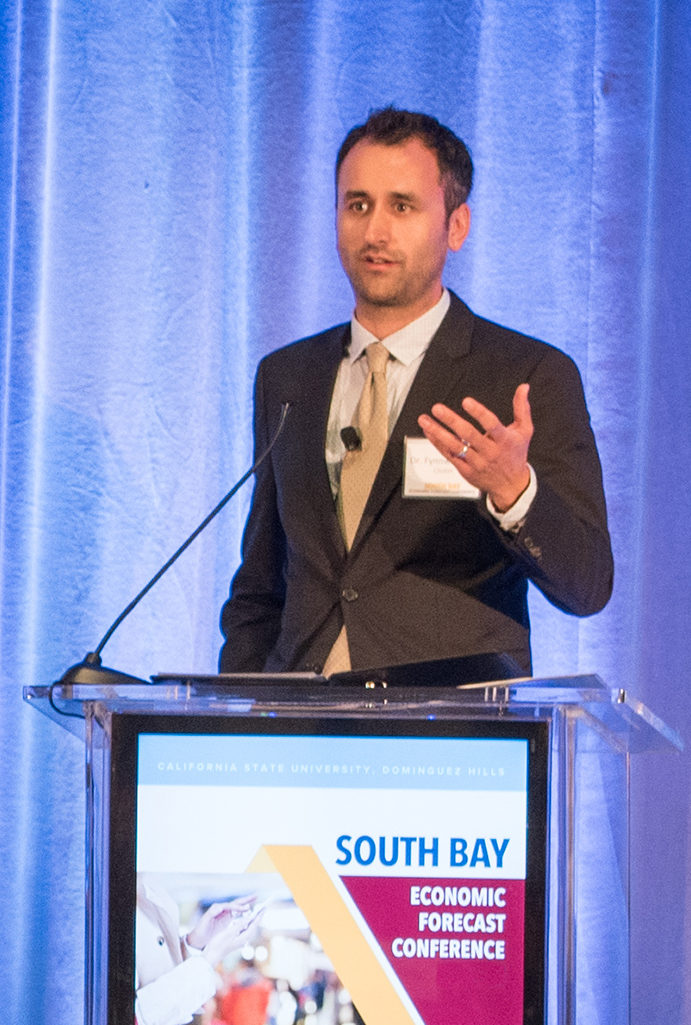
Economic uncertainty persisted, and at the end of the year the U.S. economy had shrunk by 3.5 percent, the worst year for growth since 1946. However, Supply Chain Management Review and other sources reported in late March 2021 that GDP is now projected to increase to 5.7 percent by the end of the year and 4.1 percent in 2022, before settling to a more sustainable 3.1 percent pace.
These projections align closely with the SBEI’s 2020 economic forecast.
“There are many fundamental truths to cycles of economic activity. One is that markets will rebound at some point. The question is, ‘When?’” Prager asks. “Those economies around the world (especially in the Asia-Pacific region) that were able to contain the virus quickly and engage in effective test-and-trace programs have also bounced back quickly following the lockdowns.”
Prager adds that consumer spending is expected to increase into this summer. “There is lots of pent-up demand and the federal stimulus checks will start to kick in. So, while there will always be uncertainty, there is still good reason to be hopeful for 2021 and 2022.”
Drawing Parallels
While the institute did not use Prager’s influenza outbreak paper as a model, it did consider economic factors outlined in the paper when doing research for its 2020 forecast. They include key dimensions of pandemic-related economic impacts, such as behavioral effects – avoiding schools, workplaces, public spaces, and travel – as well as such business resilience factors, such as working from home, substituting to new products and services, and vaccination schedules.
“The paper continues to inform the work we are doing at the South Bay Economics Institute in a number of ways,” explains Prager. He says that the SBEI uses it for computable general equilibrium modeling, and that the institute now has a model for the South Bay region that can be used to examine the regional economic impacts of different events, such as a pandemic.
Other parallels that Prager draws from his previous pandemic research to COVID-19 include behavioral factors; for example, highlighting the importance of wearing face masks in public, when is best to send kids back to school, and economic resilience.
“We have seen the importance of working from home, but also impressive resilience from small businesses, which, thanks to nimble business practice changes and government supports, have weathered the pandemic at much higher rates than first feared,” he says. “Finally, I would hope that there is a renewed appreciation of the importance of vaccinations. The 2016 influenza outbreak paper highlights the economic benefits of such programs, and recent events have more than confirmed those findings.”
New Directions
Prager’s views about working from home (telecommuting) have shifted now that he has lived through a pandemic.
“Telecommuting had always been touted as a disaster-resilience strategy but had rarely been studied during a major event,” Prager reveals. “At SBEI, Jose Martinez and I had studied telecommuting prior to the outbreak. We were interested in why working from home had not increased all that much since the 1990s. It had only reached between 5-15 percent. COVID-19 changed all that.”
Estimates suggest telecommuting has jumped to between 45-55 percent during the pandemic, says Prager. “We anticipate these trends will continue for some time. This shift has demonstrated significant economic resilience, but has also highlighted important side effects, such as the significant impact on the commercial real estate market.”
These and other findings have revitalized Prager’s interest in pandemic research.
“COVID-19 has brought a new interest in examining these issues, as well as many more types of data and methods,” he shares. “For example, a project I am currently working on with colleagues at USC CREATE and ImageCAT uses satellite-imaging data to explore the extent to which people were complying with government mandates, how quickly the public returned to businesses following softening of restrictions, and to what extent businesses increased operations to recapture lost output.”
Prager is discouraged by the severe disparity in health and economic impacts from the COVID-19 pandemic on communities of color and those of lower socio-economic status. The issue will be examined in his new research project given its effect on the economic impact of the pandemic and the communities CSUDH serves.
“These communities have been particularly burdened by illness, loss of life, increasing unemployment, and educational impacts among others,” he says. “Opportunities to mitigate the harms of the COVID-19 pandemic are also less available to these communities. Those in wealthier communities have been more likely to be able to take advantage of the new home-based economy. They can afford to shop online, and they have the resources to support their children’s online education. This inequality is very disturbing and important to consider when distributing government support.”
In the meantime, Prager points to a couple of recent COVID-19 developments that have boosted his economic optimism.
“There is good news all around, as a brighter public health outlook enables more businesses to reopen, especially in key employment-heavy service sectors,” he says. “The Federal Government stimulus package has also been passed, which will have important short-term stimulative impacts, especially for vulnerable households, and education and government sectors.”

